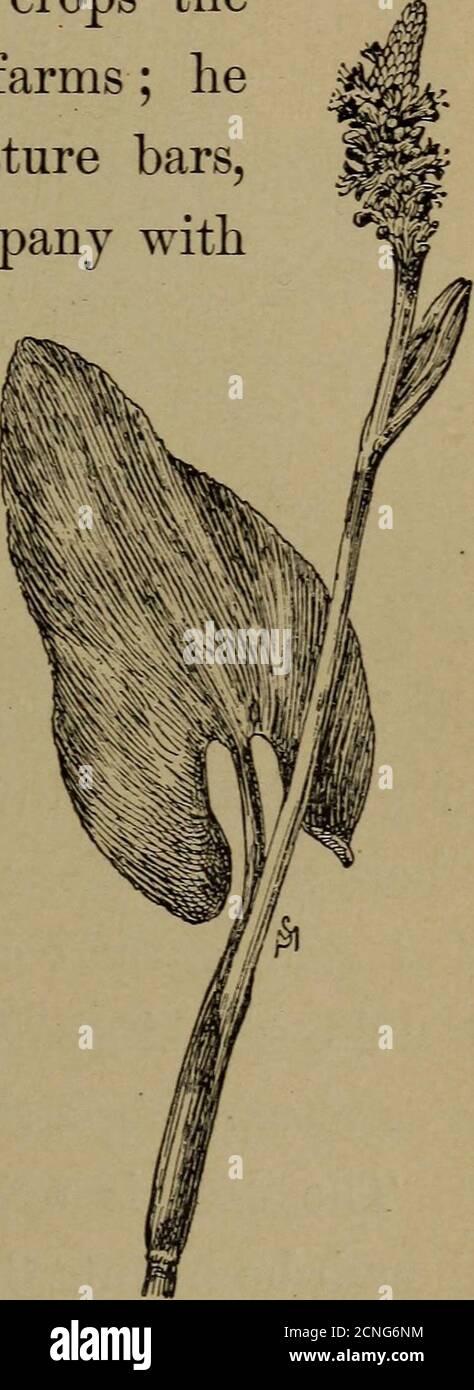. Familiar life in field and forest; the animals, birds, frogs, and salamanders . Lycopodium complanatum. Pickerel Weed. the cows ; but the latter are inclined to be suspiciousof the strangers and sometimes move off to anotherpart of the field. 234 FAMILIAR LIFE EST FIELD AND FOREST. From spring to autumn his food consists of nu-merous herbs, grasses, aquatic plants, leaves of shrubsand trees, and the berries of the mountain ash anddwarf cornel. When beech nuts are plenty—the treesbear in alternate years—these constitute a large por-tion of his fare. By the middle of September the deer in the

Image details
Contributor:
Reading Room 2020 / Alamy Stock PhotoImage ID:
2CNG6NMFile size:
7.2 MB (276.8 KB Compressed download)Releases:
Model - no | Property - noDo I need a release?Dimensions:
955 x 2617 px | 8.1 x 22.2 cm | 3.2 x 8.7 inches | 300dpiMore information:
This image could have imperfections as it’s either historical or reportage.
. Familiar life in field and forest; the animals, birds, frogs, and salamanders . Lycopodium complanatum. Pickerel Weed. the cows ; but the latter are inclined to be suspiciousof the strangers and sometimes move off to anotherpart of the field. 234 FAMILIAR LIFE EST FIELD AND FOREST. From spring to autumn his food consists of nu-merous herbs, grasses, aquatic plants, leaves of shrubsand trees, and the berries of the mountain ash anddwarf cornel. When beech nuts are plenty—the treesbear in alternate years—these constitute a large por-tion of his fare. By the middle of September the deer in the Adirondackregion desert the watercourses and retire to themore secluded parts of theforest.* Here they congre-gate during the deep snowsof winter in what are calleddeer yards ; these are certainsheltered localities wherethe heavy snow is trampled down and pathways leadin all directions toward promising food supplies, andwhere under thickets of spruce and fir the animalsfind sufficiently comfortable beds. Mr. YerplanckColvin, speaking of one of these deer yards, describesit